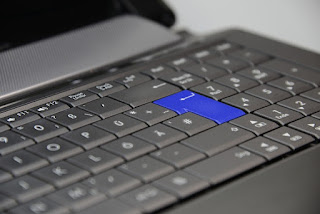With Apple's third
take on its wearables, it didn't take any chances with the WatchOS 3 when it
comes to improvements. For instance, the friends circle has been replaced with
the dock, and the docked applications load instantly. Aside from that, battery
life is excellent, and the system in general has better performance and speed.
Here's a closer look
on what the new WatchOS 3 has to offer to its Apple lovers.
The
Dock
The dock contains up to ten of your most frequently used apps.
To access it, press the watch's side button. Then from here, you can use the
Digital Crown to scroll left or right. This is better than sliding through the
app selection with your finger. While you can remove dock apps from the Watch
app on your iPhone, it's more convenient to slide up on the app from the Dock
itself. Once you're at this step, simply tap the big X.
Any applications that aren't in the Dock will appear in the Dock
after use as "recent." You can then choose if you want to keep it in
the dock.
Siri
In WatchOS 3, along with iOS 10, Siri now offers third-party
support since she now has the ability to interact with your applications hands
free. This means you don't need to launch those third-party apps separately.
Here are some examples:
·
Uber - you can say, "Hey Siri, book me a ride
on Uber."
·
Nike+ Run Club - you can say "Hey Siri, start a workout
with Nike+ Run Club."
·
Square Cash - you can say "Hey Siri, send my wife
Jane $30 for her shopping on Square Cash." You will be then asked to
confirm, and it will process away your request. You can also request for money
if you wish to.
Workout
Apple's WatchOS 3 is marketed intensively as a workout
companion, and it's true to its promise. The heart-rate sensor is more accurate
than most fitness trackers in the market, and the built-in workout app itself
knows no parallel. Here's what you can benefit from the Workout App on WatchOS
3.
You can now give nicknames to your "other" workouts in
the Workout App. Simply select "other," complete your workout, tap
Save, and scroll through the list of workout names. Once you have accomplished
this, Apple Watch will remember that particular workout's nickname and will
keep it in the quick start menu.
When working out, double-tap on your screen to split that
workout into a "section." For instance, when running on a track, a
double tap could signify a lap. The Watch will save each section with its own
data to be viewed after the workout.
Messages
Considered as the most used mobile app in Apple's history,
Messages has received the biggest overhaul this time around, ranging from
friendly stickers to full-screen effects. All Messages features on the WatchOS
3 are included in iOS 10, except Scribble.
Here are the features you can get:
·
Tapbacks - Double-tap on a message to select a
"tapback." Think about a tapback as a quick response message. Instead
of responding with "okay" or "cool," you can respond with a
thumbs-up tapback.
·
Pre-Canned Responses - Select and send a pre-canned response
directly, rather than having to select "respond," like in previous
Watch OS versions.
·
Language Selection - Force Touch and select "Choose
Language" to change the current language.
·
Directions - Force Touch, select "Details,"
scroll and then select the contact's address to get directions. The Maps app
will then begin to launch.
·
Full-Screen Effects - These effects can't be sent from the Watch,
but they can be received from other iOS devices running on iOS 10.
·
Scribble - When pre-canned responses or dictation
aren't appropriate for the situation, tap scribble and start scribbling out
what you want to send. The best part of this is it's quick, and the letters can
be written over one another.
·
Speed - Dictation is overall quicker and more
precise. Commands such as "exclamation mark" and "period"
are picked up easily.
SOS
Keep in mind that the SOS feature is something you will be using
everyday. But if you do, you'll be glad your WatchOS 3 has it. To use this
feature, press and hold the side button for six seconds to call emergency
services. Apple Watch recognizes what country you're in and dials the
corresponding emergency number. After your call with emergency services, Apple
Watch alerts selected contacts of your location.








